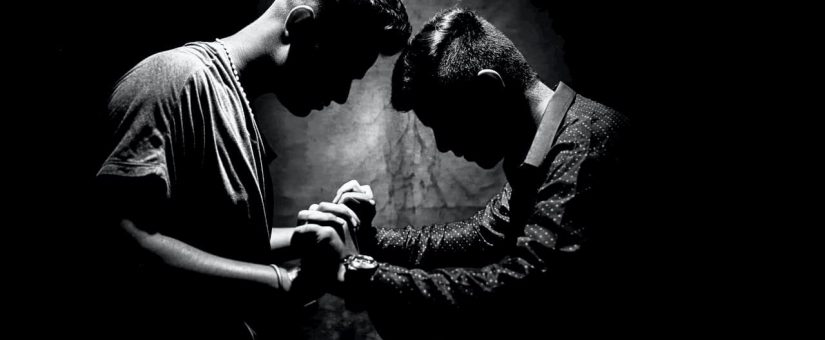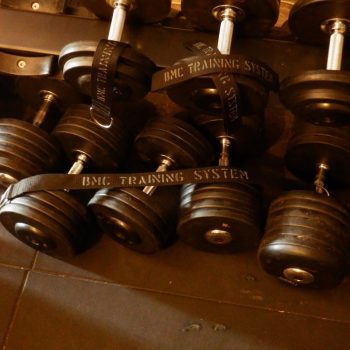
Self-Defense Training
- On January 21, 2021
- 0 Comments
Why and for what, and most importantly for whom do we need self-defense courses? What is their difference from, say, hand-to-hand combat classes?
It is not without reason that self-defense courses are separate from combat sports. After all, we can assume that, for example, sambo, karate or army hand-to-hand combat already give confidence that a person can defend himself in an emergency situation. And I’m sure that many athletes have this feeling.
Strokes, self-defense techniques, the algorithm of actions in combat situations, all this gives a positive effect in terms of self-defense. But there is one thing, or rather several. The first. Many of the techniques of defense against a knife, gun, etc. initially do not work. Secondly, in gyms they do not give enough knowledge about the methods of protection from improvised (stone, stick) and special means (traumatic gun). Third, there is no training in defending against multiple opponents. And if there is any attention to it, then, unfortunately, it is not enough.
And this is where there is a watershed between combat sports and self-defense courses. The main difference here is the initial focus on training. Sports: development of strength, character, skills. Self-defense: protection of oneself, relatives and loved ones. Hence the difference in training and techniques. Self-defense training is initially based on the principle that the opponent, or maybe several opponents are physically stronger and stronger than you, plus possibly armed. This is not the case in sports.
Proceeding from this principle we teach to defend ourselves not only with hands but also with improvised objects, allowed self-defense means, and we also pay special attention to mental preparation and tactical use of environment. Let’s take a closer look.
Initially, we always put in a good boxing punch, teach hand-to-hand combat and wrestling, as well as paying attention to the physical development of the trainees and a lot of stretching. That’s the base. You can’t do anything without it. Especially a good punch can incapacitate an opponent quickly and with almost no consequences.
At the same time we begin to teach the so-called applied combat. This is the use of self-defense techniques that disable the opponent quickly and without any further resistance from him or her. Affecting the opponent’s painful spots, using clothes to protect your own and your opponent’s body (for example, a hood can be pulled over the opponent’s forehead and a punch or a wrestling move).
Use of improvised objects. For example a belt. And in particular stick fighting. After all, there’s nothing easier than a stick, and it’s easy to find. Plus, if used correctly, you will not inflict serious wounds on the opponent, except for a bruise of the soft tissues.
The use of special means of self-defense.
A gas canister. It is convenient and small and easy to use. We teach how to work with it at different distances, how to carry it, how to use it when gripping your hands, etc. By the way, we don’t recommend the newfangled gas tools like the Punch
traumatic gun. There are many nuances in its use, both legally and when used in a conflict situation. How to correctly use a gun and come out the winner of the conflict, without consequences from the law, and we teach in class
Knife Fighting. We teach how to work with a knife, effective defensive techniques against it. At the same time we study the structure of the human body for the proper self-defense knife. Our goal is to teach how to wield a knife effectively and competently.
If you have noticed, you can often hear in the news that by using a knife to protect yourself, your opponent was killed. Or 40-50 stab wounds were found on the body. This is a completely commonplace use of a knife. The fact is that knowing the knife fight, you can already scare away an opponent just by playing with a knife, plus you’ll already know how your opponent can behave. This is a huge layer of knowledge and techniques, which we have brought in a separate section.
Psychological preparation.Even a physically strong athlete in a stressful situation feels anxiety and discomfort. An untrained person may even fall into a stupor. That can instantly affect his future fate.
With the help of certain exercises and practices we prepare the psyche of the trainee for a calm and adequate assessment of the conflict situation and the search for a way out of it. A good consequence of these exercises is an increase in the self-esteem of the person and his inner peace. Stress, for example, from family and work moments also ceases to have a powerful effect.
So, summing up, we can conclude that sports is good, but to survive in the “urban jungle” requires special training.
Competent assessment of the situation at the beginning of the conflict, adequate and competent use of techniques and means of self-defense, a winner out of the conflict. This is what we teach at our classes. The street is not a ring, not a boxing / wrestling match. It is most often the suddenness, the use of chains, knives and sticks by the opponent. Its brutality. And there won’t be a referee who can stop the fight. So you have to prepare for any situation. Maybe you’ll never find yourself in a situation like this. But it is better to be prepared than to be crippled or fail to protect your family and friends. Come! We will teach you how to competently defend yourself.



0 Comments